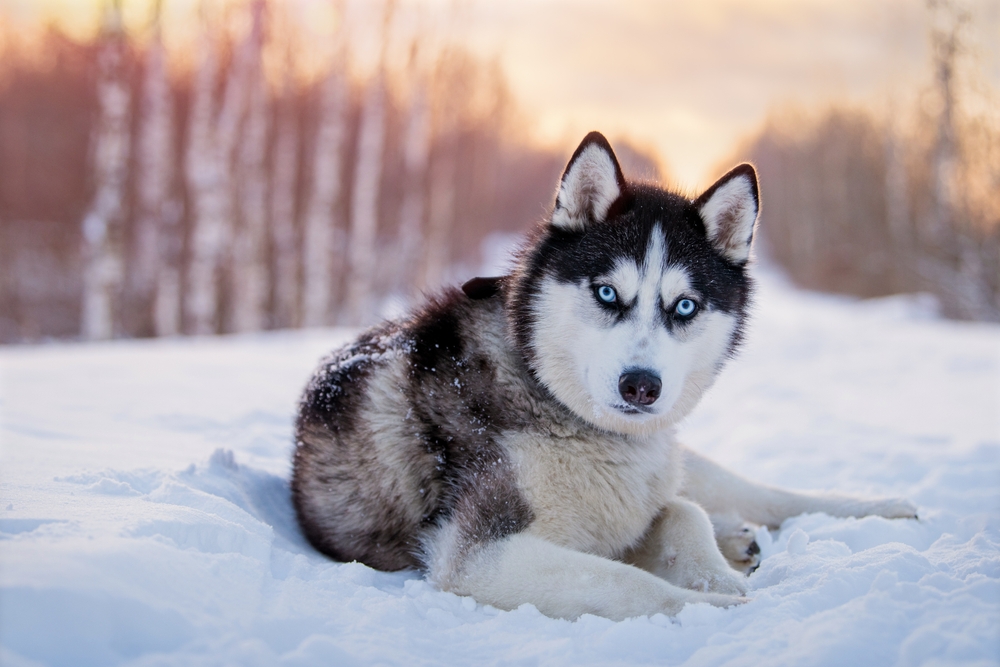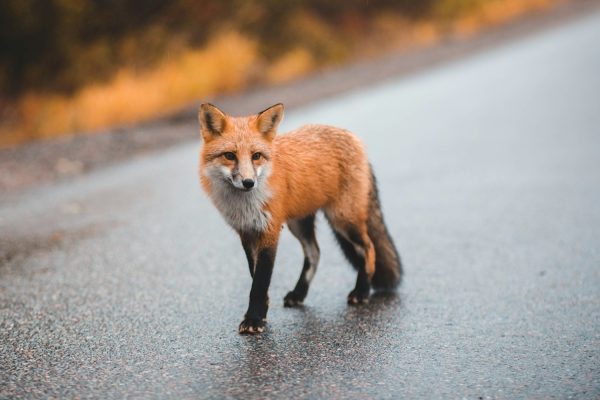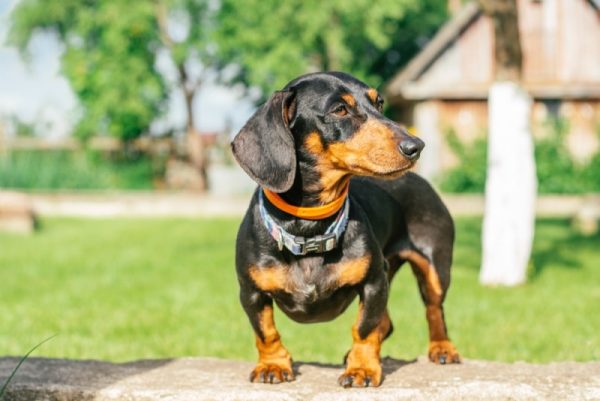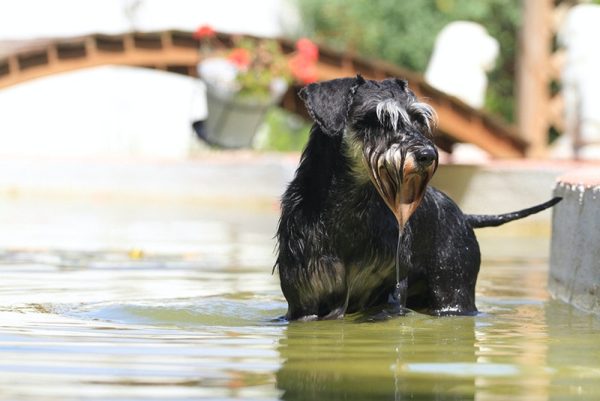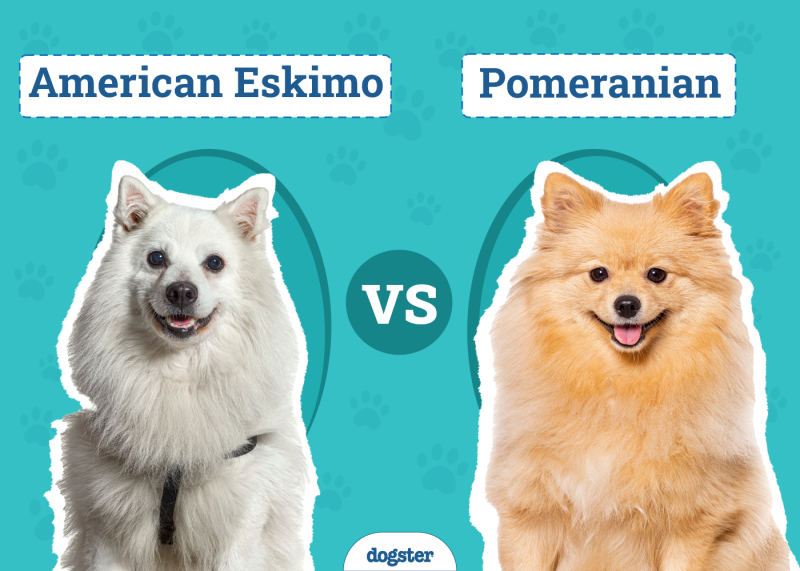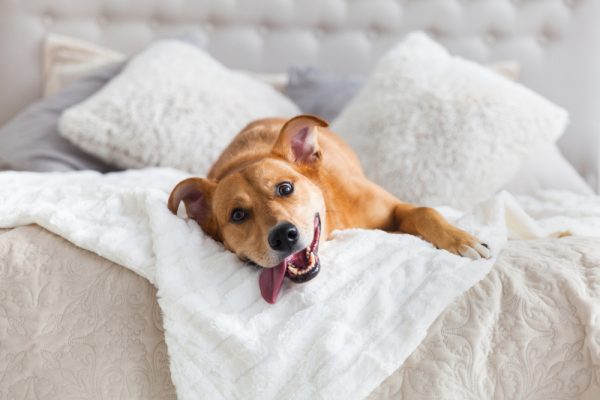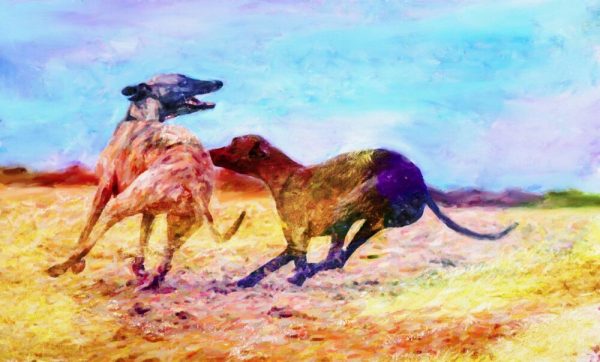In this article
Something that most prospective owners want to know when trying to choose the right dog for their family is how aggressive each breed is. Well, I’m here to tell you that aggression is not really something we can easily predict or measure, as it is a trait that has multiple contributing factors, and breed is only one of them.
Aggression is the culmination of genetic background, including breed and lineage, early obedience training and socialization, life experience, diet, exercise, and situation. We feel that ranking dog breeds based on aggression does them a disservice, but we do understand that people want, and need, to know as much as they can about the potential temperament of a dog before bringing one home.
We have put together two lists to help answer the question of which breeds are the most aggressive by assessing, statistically and experientially, the Breeds Most Likely to Bite Humans, and the Most Dangerous Dog Breeds, based on the severity of the damage they cause if they do bite.
Neither list should be used to condemn or reject any of the listed breeds, but they can help you to prepare for any potential challenges, and prevent your dog from becoming a statistic.
The 10 Breeds Most Likely To Bite Humans
Around half of the breeds included here are often left off lists and out of statistics because, despite often leading with their teeth, they usually don’t inflict enough damage to land their victim in the hospital, or even at the doctor’s office. However, that doesn’t mean that we should ignore their bitey behavior.
1. Chihuahuas
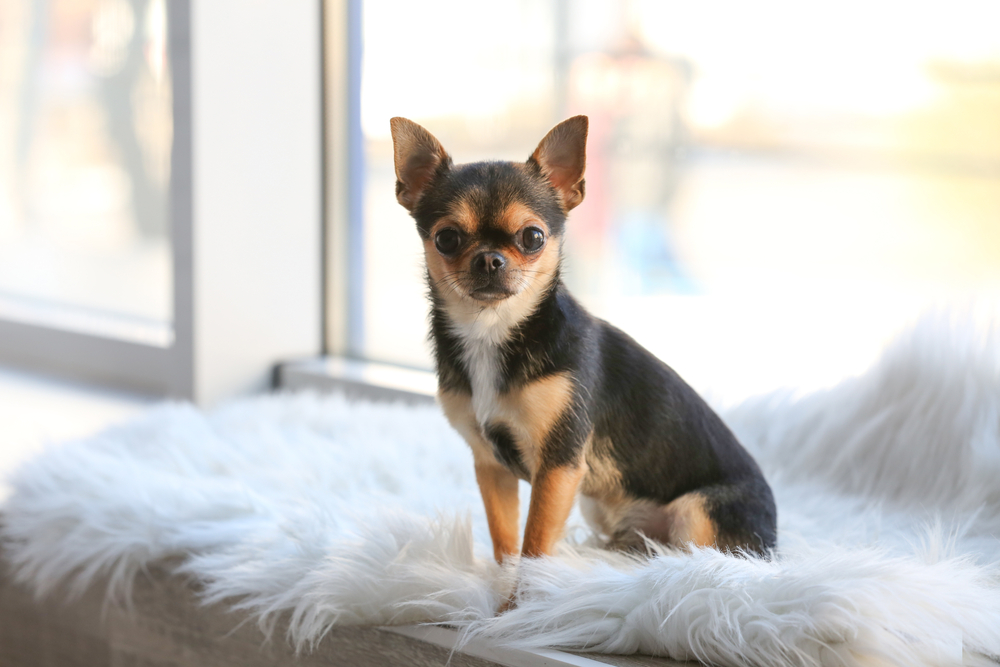
| Lifespan: | 14–16 years |
| Origin: | Mexico |
| Average Weight: | 3–6 pounds |
| Average Height: | 5–8 inches |
Sometimes (affectionately) nicknamed “land sharks,” these itty-bitty dogs do not like to be underestimated, and it’s not unusual to see them squaring up against the biggest dog in the park. Being the smallest of the dog breeds, many Chihuahuas seem to feel the need to overcompensate for what they lack in physical stature by greeting the world teeth first, something that is often encountered in veterinary practice. While it is understandable that these tiny creatures will feel the need to defend themselves against things that they find large and threatening (ie. virtually everything), it does not mean that their aggressive tendencies should be tolerated. Quite often, if we carefully push past their sharp-toothed defenses, we can show them that we mean no harm.
Regular handling, socialization, and introducing them to new people from a young age are vital steps towards a well-mannered Chi. Be mindful that they are likely acting out of fear, but try not to let them succeed in getting away with biting.
2. Dachshunds
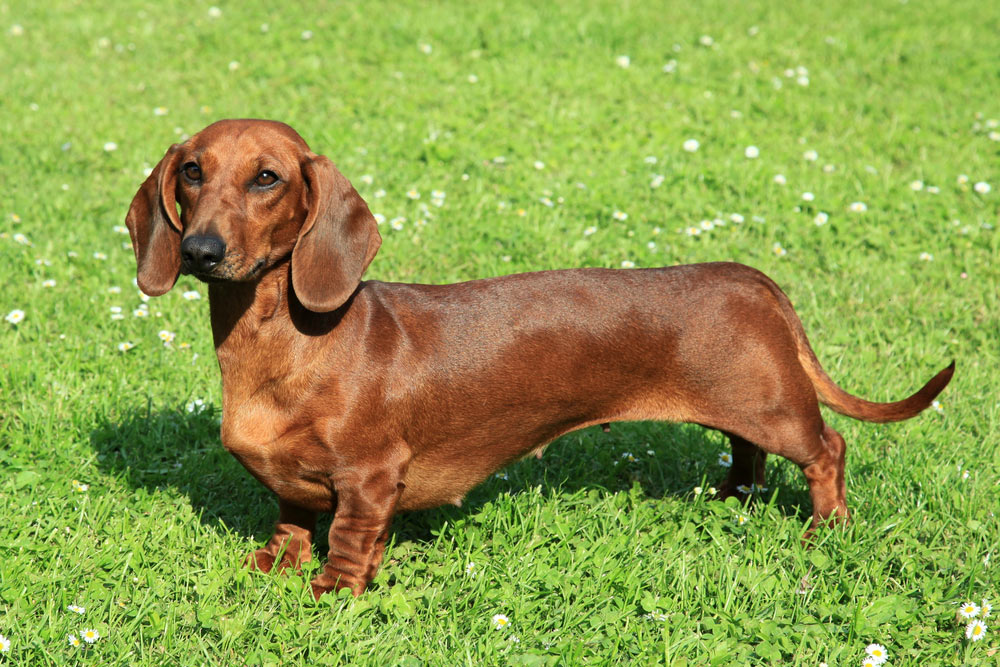
| Lifespan: | 12–16 years |
| Origin: | Germany |
| Average Weight: | 16–32 pounds
Less than 11 pounds (miniature) |
| Average Height: | 8–9 inches
5–6 inches (miniatures) |
Much like their short-statured friends from Mexico, the Dachshund often finds itself towered over by dogs and humans alike. Coupled with their very cute appearance, they are often the victim of well-meaning but inappropriate petting. When someone looms over you with an outstretched hand, it’s understandable that you might feel threatened. Socialization is essential to ensure your ‘wiener dog’ stays on their best behavior, but it’s also important to ask people to wait until they are invited before reaching down to pet your dog.
3. Jack Russell Terriers
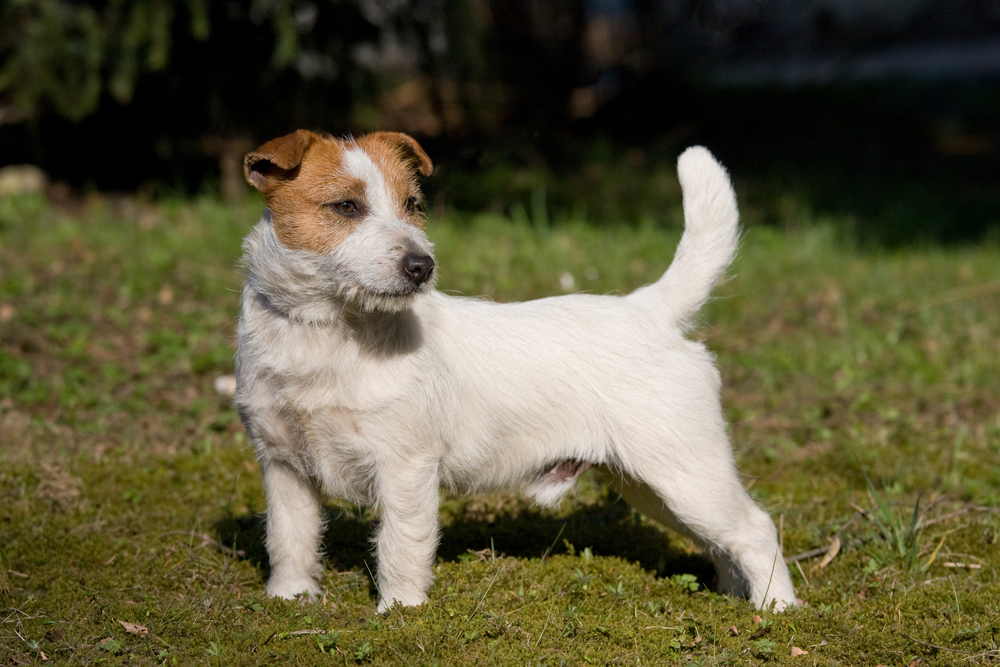
| Lifespan: | 13–15 years |
| Origin: | England |
| Average Weight: | 9–17 pounds |
| Average Height: | 10–15 inches |
Tenacious is one word that springs to mind when talking about the Jack Russell Terrier. Bred to chase, catch, and kill vermin like rats, these terriers are the very definition of ‘small but mighty’. Unfortunately, pent-up energy, reactive nature, and propensity to ‘act first, think later’, means they can sometimes perceive objects in their immediate perimeter like threat or prey, latching onto a hand without thinking.
Lots of mental and physical stimulation is vital for these dogs, otherwise, you are left dealing with a wound-up ball of muscle that is itching to chase, lunge, and snap at everything around it.
4. Border Collie
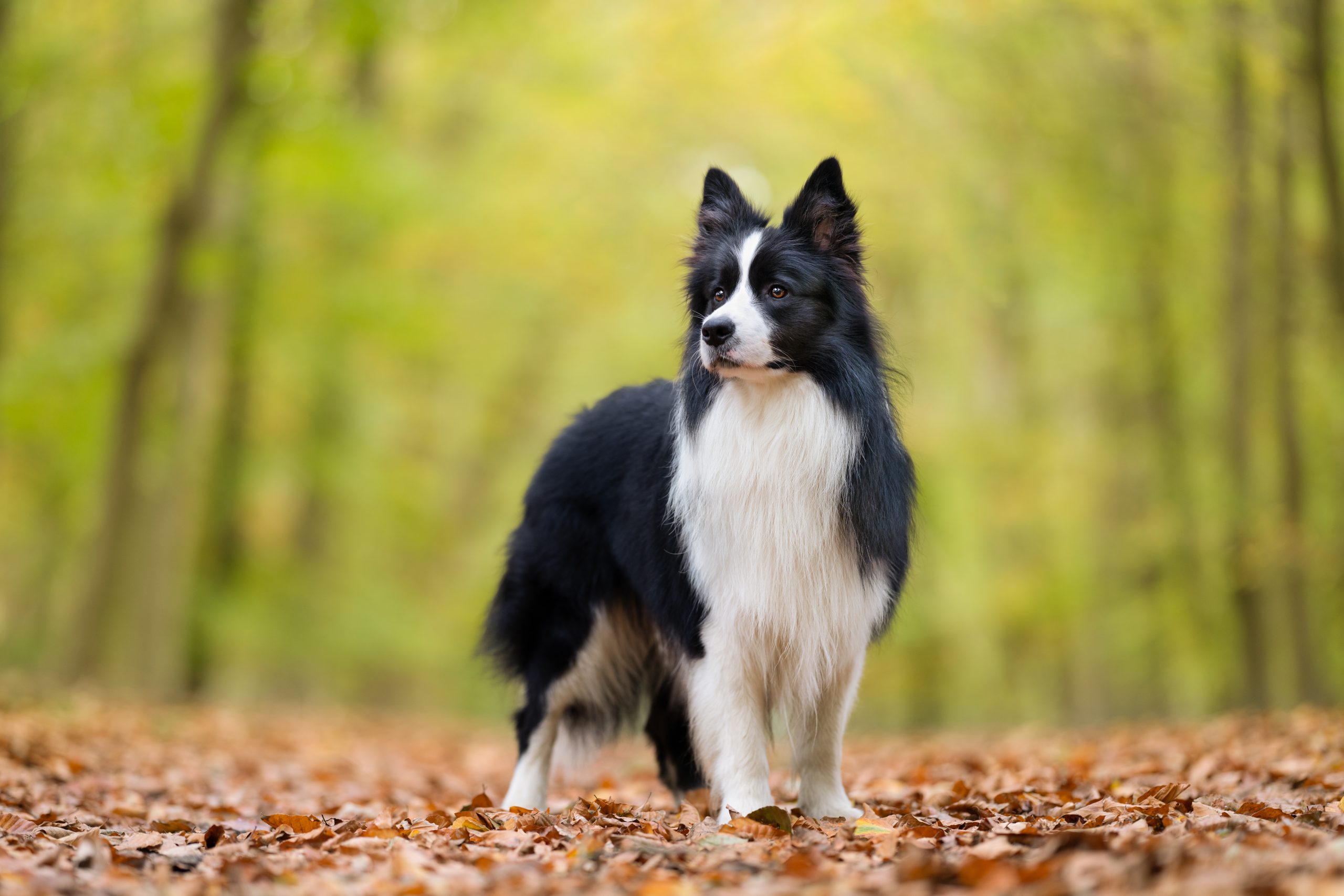
| Lifespan: | 12 – 15 years |
| Origin: | England and Scotland |
| Average Weight: | 30 – 55 pounds |
| Average Height: | 18 – 22 inches |
If you’ve ever seen one of these dogs in action herding sheep, you will know how incredibly agile, athletic, and intelligent they are. Although the Border Collie can make a wonderful family pet, those who come from a strong working background may find a more domestic lifestyle a bit stifling.
When herding sheep, the Border Collie has to be quick and decisive with the occasional bite to a woolly behind. In the absence of sheep, these intelligent dogs can become frustrated, with their herding instincts used on other pets or children, and bite reflex coming out in inappropriate settings.
If you are looking to bring a herding dog into your home, ensure you have lots of land, toys, and games to keep their bodies and minds active and do your research to find dogs that have been bred as pets for several generations rather than one that has come fresh from the farm.
5. Australian Cattle Dog
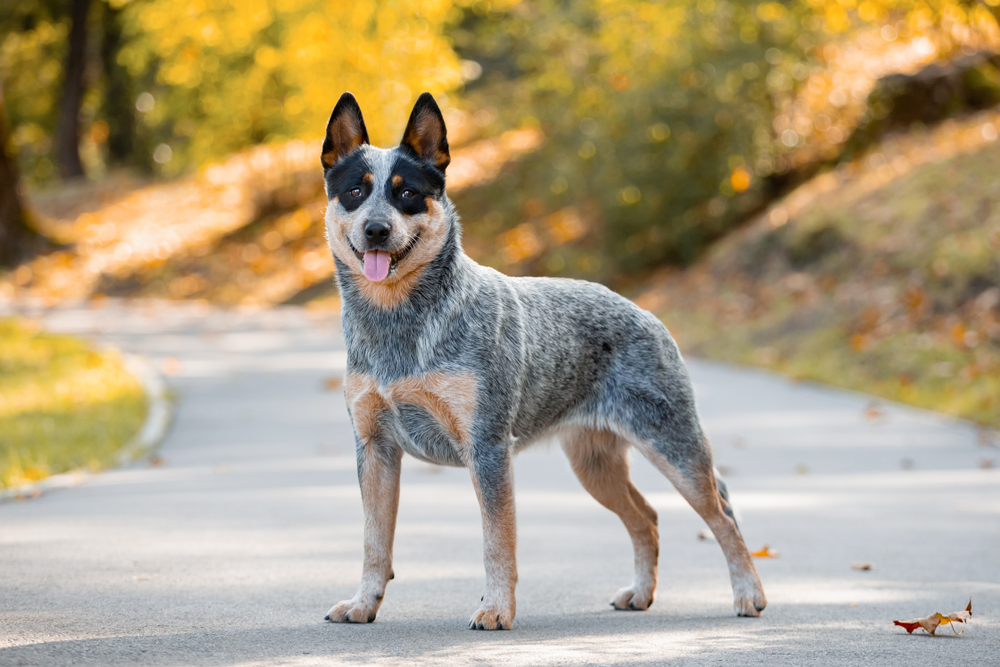
| Lifespan: | Australia |
| Origin: | 35 – 50 pounds |
| Average Weight: | 17 – 20 inches |
| Average Height: | 12 – 16 years |
Also known as the Blue Heeler, these beautiful dogs from down under have similar traits to the Border Collie, with a background in helping farmers herd sheep and cattle across vast properties in Australia. Like the Border Collie, Cattle Dogs that come from a strong herding line are going to find domestic life frustrating, and those instincts are almost impossible to repress. If you are looking for a pet, look for lines that have been bred to be at home in the suburbs rather than bringing a champion herding dog into your home, unless you have a hundred head of cattle to keep them occupied!
6. XL Bully

| Lifespan: | United States |
| Origin: | 10 – 12 years |
| Average Weight: | 44–132 pounds |
| Average Height: | 19–23 inches |
These relative newcomers to the dog world are not technically a recognized breed at all. They are believed to be a mix of the American Pitbull Terrier and other ‘bully’ breeds such as the American Bulldog, to create a mastiff-sized dog with Bulldog features. Often sought after for their imposing stature and fearsome appearance, the XL Bully has attracted a lot of negative attention both here in the US and abroad, becoming the first dog breed to be banned in the UK since 1991, due to an increasing number of fatal attacks.
Some feel that the XL Bully is just the latest to be painted with the same ‘aggressive’ brush as dogs like the Pitbull, but there is evidence to suggest that their original breeders targeted bite force, aggression, and reactivity to create a champion dogfighter. With these traits only very recently being selected for, this does create a lot of concern over their temperament. The emergence of ‘bodybuilding supplements’ aimed at these breeds is also a worrying trend.
Genetics are, of course, only one component of temperament, but we cannot ignore the fact that the behavioral and physical traits these dogs have been selected for are going to make training and socialization more challenging than they ought to be.
7. Pomeranian

| Lifespan: | 12–16 years |
| Origin: | Germany and Poland |
| Average Weight: | 3–7 pounds |
| Average Height: | 6–7 inches |
These precious balls of fluff will melt your heart with their ‘butter wouldn’t melt’ expressions, but don’t be fooled; some of those fluffballs can be sharp! Much like the Chihuahua, the sweet features and small size of the Pomeranian means that they sometimes seem to think that an attack is the best defense and a quick path to getting their own way.
Often the victim of poor training and socialization, the Pomeranian can easily be taught to not bite, and spoiling them will do them no favors.
8. Rottweiler
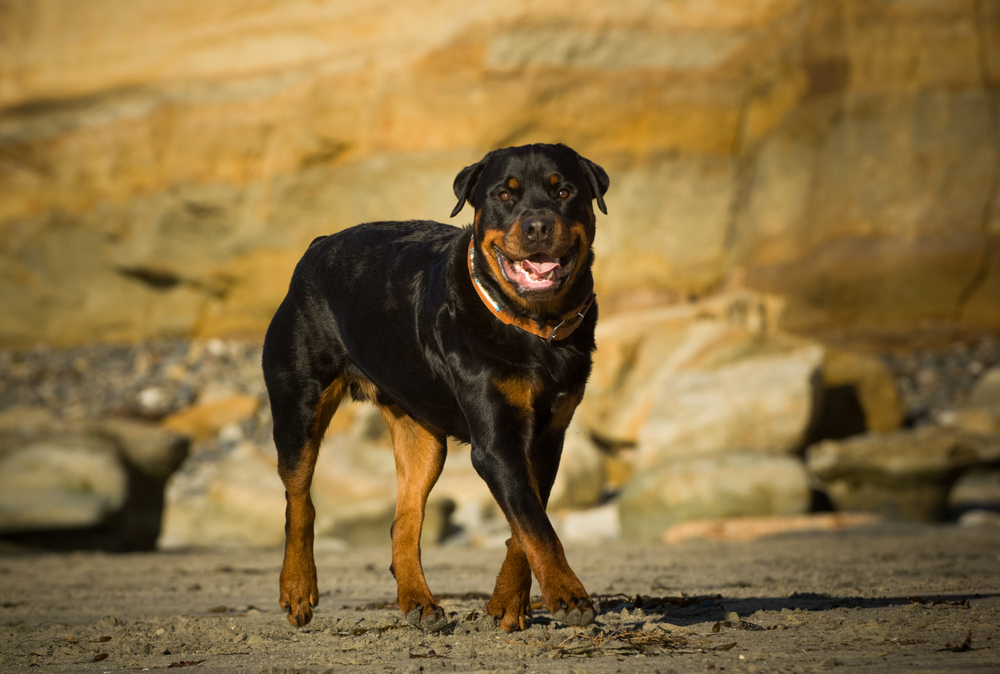
| Lifespan: | 9–10 years |
| Origin: | Germany |
| Average Weight: | 80–135 pounds |
| Average Height: | 22–27 inches |
These often gentle giants do have an unfair reputation for aggression, but they are also a breed that can be quick to bite when put under pressure. Originally bred in Germany as herding dogs, the Rottweiler’s large head and imposing body made them popular military, police, and guard dogs during the 20th century. This change in roles meant that dogs were often selected for reactive or aggressive tendencies. These days they are a popular and beloved breed, being loyal and loving companions and family members. However, their recent foray into roles where aggression was favored means that some dogs can be quick to bite.
9. Akita
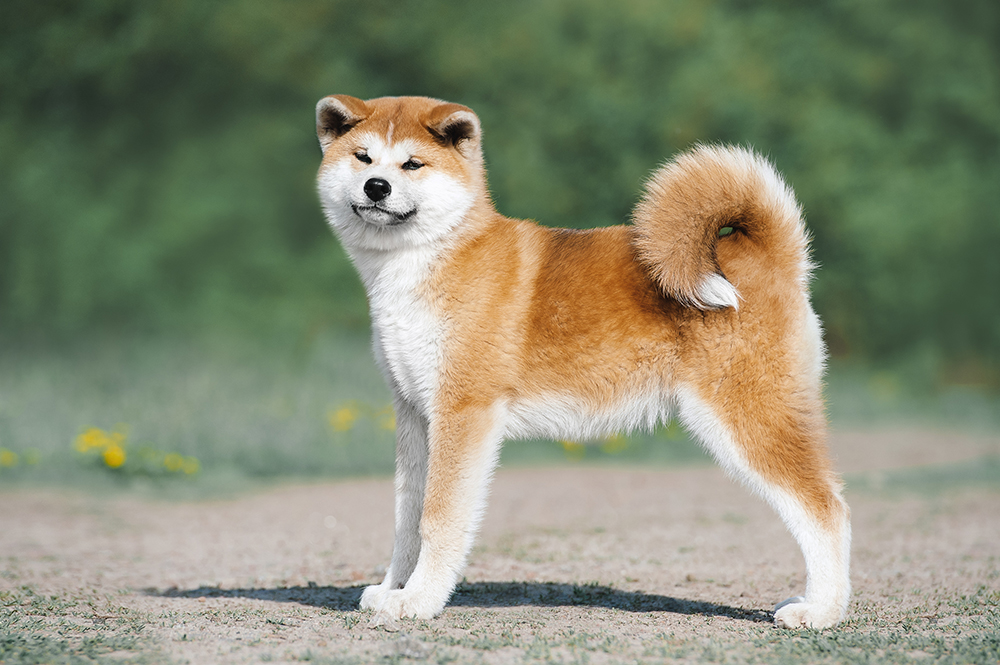
| Lifespan: | 10–13 years |
| Origin: | Japan |
| Average Weight: | 70–130 pounds |
| Average Height: | 24–28 inches |
These loyal but somewhat aloof dogs were used for hunting and guarding traditionally. Today, they still form strong bonds with their owners, over whom they can be very protective. Don’t get us wrong, the Akita is usually a very loving and gentle family member, but they are also known to be quick to act defensively around newcomers. They are not a breed for the inexperienced dog owner.
10. Siberian Husky

| Lifespan: | 12–14 years |
| Origin: | Siberia |
| Average Weight: | 35–60 pounds |
| Average Height: | 20–23 inches |
The beautiful wolf-like appearance of the husky has made them a firm favorite amongst dog owners, but they are a breed whose history must be considered. Bred to pull heavily laden sleds over the icy tundra, these dogs work well as a team and often relate better to companions of the canine persuasion than humans. In a pack, roles and relationships are maintained with fierce discipline, and sometimes the husky will apply canine methods in their dealings with humans, forgetting that we don’t have thick coats to protect us from their sharp teeth.
Most Dangerous Dog Breeds
These are the breeds that, statistically, are more likely to land you in the hospital, or worse yet, the morgue, if they attack. The reason these dogs often have such a bad reputation is not necessarily because they are overly aggressive or likely to bite, it is because when they do bite, they cause serious damage.
You will notice that some breeds have made it to both lists. Again, this does not mean that these dogs are inherently dangerous or likely to attack, but they are statistically overrepresented in cases of serious biting events, and their breeding history has unfortunately given them a predisposition to attack when cornered or threatened. While certain breeds like the Border Collie or Cattle Dog can be quicker to go for a bite, theirs tends to be short and sharp, whereas the dogs on this list are more inclined to latch on and shake their victims, which is what makes them more dangerous.
11. Pitbull
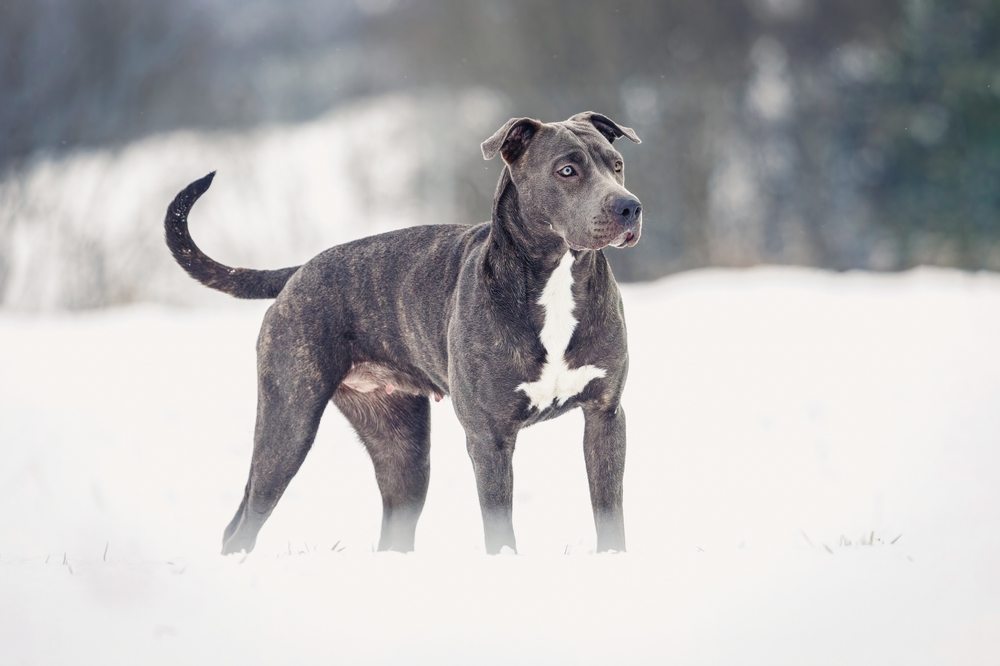
| Lifespan: | 12–16 years |
| Origin: | USA and England |
| Average Weight: | 40–70 pounds |
| Average Height: | 17–19 inches |
Probably the most misunderstood and misrepresented dog breed of all, the Pitbull is still the breed most commonly implicated in human fatalities from dog bites. Does this mean that they are inherently aggressive? We don’t think so, but their ability to inflict serious damage cannot be dismissed.
Originally used to dominate bulls and other dogs, the Pitbull was bred for their stocky, muscular bodies, powerful jaws, and tenacity in the fighting ring. Sadly, some are still used for illegal dog fighting, and there are dog owners who actively seek an aggressive, fearsome brute to intimidate others or impress their friends. These days, more gentle and affectionate personalities are favored, and many families will attest to their loyal and loving natures. However, if a Pitbull does bite, theirs is not a warning, but a winning and sometimes fatal blow.
12. XL Bully

| Lifespan: | 10 – 12 years |
| Origin: | USA |
| Average Weight: | 44–132 pounds |
| Average Height: | 19–23 inches |
We have already discussed the recent emergence of this breed, and how they can be more reactive than other bully types. Coupled with their powerful jaws and muscular build, the XL Bully’s capacity to inflict serious and fatal injury is, sadly, well documented.
This is a breed that can, and does, make loving and gentle pets, but to ignore their potential to cause damage would be irresponsible. Given that they are already an imposing size and weight at 8-10 weeks old, socialization, training, and discipline need to be strict and intense to ensure these impressive dogs learn to harness their softer side.
13. Rottweiler

| Lifespan: | 9–10 years |
| Origin: | Germany |
| Average Weight: | 80–135 pounds |
| Average Height: | 22–27 inches |
The big meaty head and thick muscular neck that make the Rottweiler a recognizable and huggable dog are also the features that can make them dangerous. The huge muscles that power their jaws mean that if they do bite, they do so with significant force, and do not let go easily.
14. American Bulldog
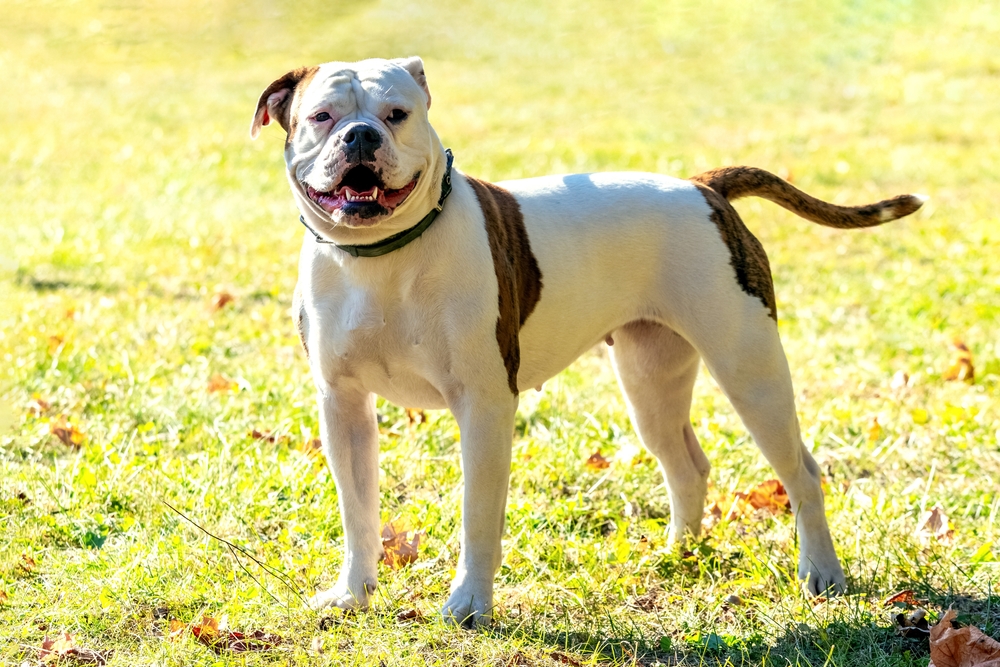
| Lifespan: | 12 – 15 years |
| Origin: | USA |
| Average Weight: | 60 – 120 pounds |
| Average Height: | 20 – 28 inches |
These large and powerful dogs are not necessarily known for being aggressive or quick to bite, but their strong jaws and necks mean that if and when they do, they can inflict serious damage.
15. German Shepherd
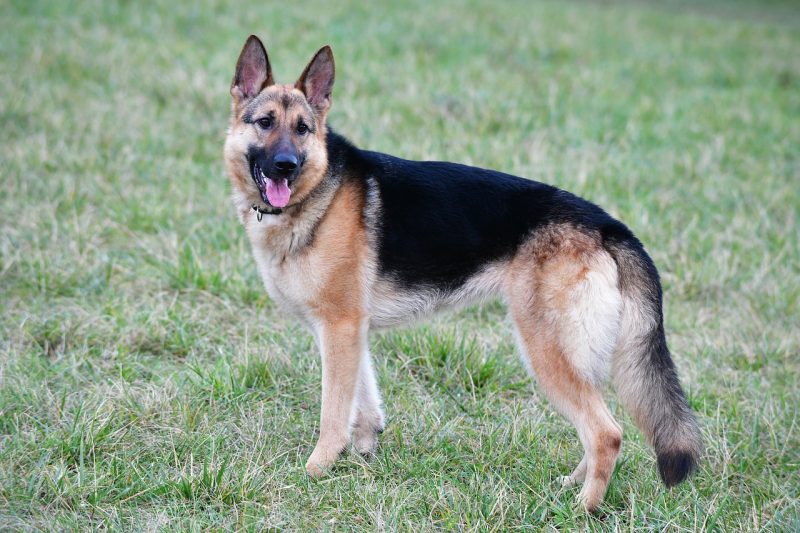
| Lifespan: | 12–14 years |
| Origin: | Germany |
| Average Weight: | 48–88 pounds |
| Average Height: | 22–26 inches |
The German Shepherd, as their name suggests, has their origins in herding livestock. However, their intelligence, size, and trainability have made them extremely popular as police, military, and guard dogs. What makes them stand out in these roles is their ability to be trained not just to attack, but to hold and release their quarry on command. However, if they attack and bite outside such controlled situations, their powerful jaws and tenacious nature are a dangerous combination.
16. Wolf/Dog Hybrids

| Lifespan: | Depends on the hybrid; the average lifespan of a wolf in captivity is 12–14 years |
| Origin: | Various |
| Average Weight: | 75–155 pounds |
| Average Height: | 26–34 inches |
There are a number of wolf/dog hybrids that are becoming popular, something that is arguably a really bad idea. Keeping a wild animal as a pet, even one that has been bred in captivity, is never a good idea, particularly when you are talking about one that is as powerful and potentially dangerous as a wolf. Some wolf/dog hybrids are several generations away from their wild ancestors, and the risks are lower, but others are a first-generation mix between a wolf and another breed. If you are desperate to bring home your very own wolf, consider a breed that has a wolf-like appearance without the wild animal genetics.
17. Akita

| Lifespan: | 10–13 years |
| Origin: | Japan |
| Average Weight: | 70–130 pounds |
| Average Height: | 24–28 inches |
We know that these noble canines can be loyal and protective to a fault, but it is also important to know that when an Akita does bite, they usually mean business. It is important to socialize your dog with people from a young age but also to ensure that you have safety measures in place when visitors come to the home.
18. Dogo Argentino
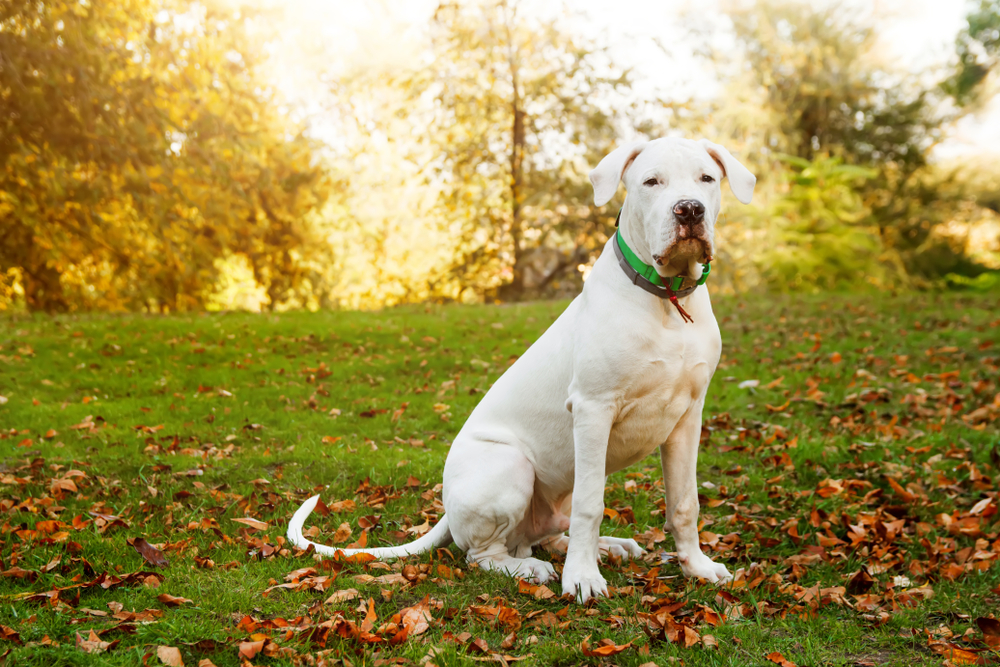
| Lifespan: | 9–15 years |
| Origin: | Argentina |
| Average Weight: | 88–100 pounds |
| Average Height: | 24–27 inches |
These imposing dogs were bred specifically to take down large game, as well as defend against predators like bears and mountain lions. While they can be loyal companions and very valuable working dogs, the physical and behavioral traits that made them suited to the work they performed pose a potential risk to humans. They are one of only 5 dog breeds banned in the UK.
Like any dog breed, in the right home, with the right training, the Dogo Argentino can be a gentle and loving pet, but their protective instincts and strong prey drive can also make them a dangerous one.
19. Alaskan Malamute

| Lifespan: | 10–14 years |
| Origin: | Alaska, USA |
| Average Weight: | 73 – 75 pounds |
| Average Height: | 20–22 inches |
Like the Siberian Husky, the Alaskan Malamute is an impressive, cold-resistant powerhouse that was bred to pull heavy loads across the ice and snow. They also have a tendency to relate to people as pack members and need strong discipline and strict boundaries to ensure they are calm and confident about their role in the family. Being much larger and heavier than the Husky, the Malamute can be more dangerous if they bite, particularly if there are children involved.
20. Large Mixed Breed
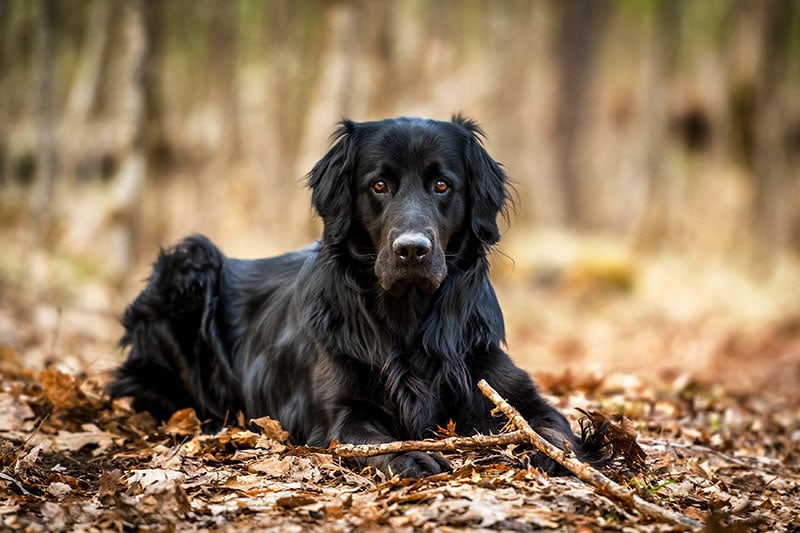
| Lifespan: | Various |
| Origin: | Various |
| Average Weight: | > 45 pounds |
| Average Height: | Various |
Mixed breed, mongrel, or Heinz 57 – the ultimate unknown quantity. Ironically, all dog breeds were mongrels at some point; it was only through selective breeding that individual breeds emerged. Predicting the behavior and temperament of a dog with a lucky dip of genetics is impossible, and perhaps highlights the fact that any dog can be dangerous, so the safest and smartest thing to do is to train, socialize, and love them as though the potential to bite is there.
Being able to recognize certain physical and behavioral traits in a crossbreed, however, can help you identify possible problem areas. If you think your dog is part Border Collie, you will want to make sure they have lots of mental and physical stimulation, or a Husky mix might need reminding that their human companions are not just ‘one of the pack’.

Final Thoughts
Aggression is not a trait that is easy to evaluate or predict, but there are certain features of canine temperament and behavior that can give us some clues about how some dogs may react under certain circumstances. The breeding and genetics of a dog is only one aspect of their temperament, and we cannot make assumptions about an entire breed based on their heritage. However, the traits they were – and still are – selectively bred for, will have an influence on their behavior, and it is up to us to learn as much as we can about the history of a breed, as well as the history of an individual dog’s lineage, to help us prepare for potential issues.
The lists we have created are not intended to paint these breeds in a negative light or tell you to avoid them. In fact, I happily share my home with two land sharks and a German Shepherd! But just as it would be foolish to bring home a French Bulldog without becoming familiar with the health issues of brachycephalic dog breeds, it would be irresponsible to welcome a precious Pitbull or mighty Malamute into the family without knowing how important socialization and discipline are for these breeds.
There are no bad dogs, but there are poorly prepared owners.
See also:
- Are Breed-Specific Laws Effective? Arguments For and Against
- Why Are Chihuahuas So Aggressive? Breed Temperament & Likely Reasons
Featured Image Credit: Maria Moroz, Shutterstock


